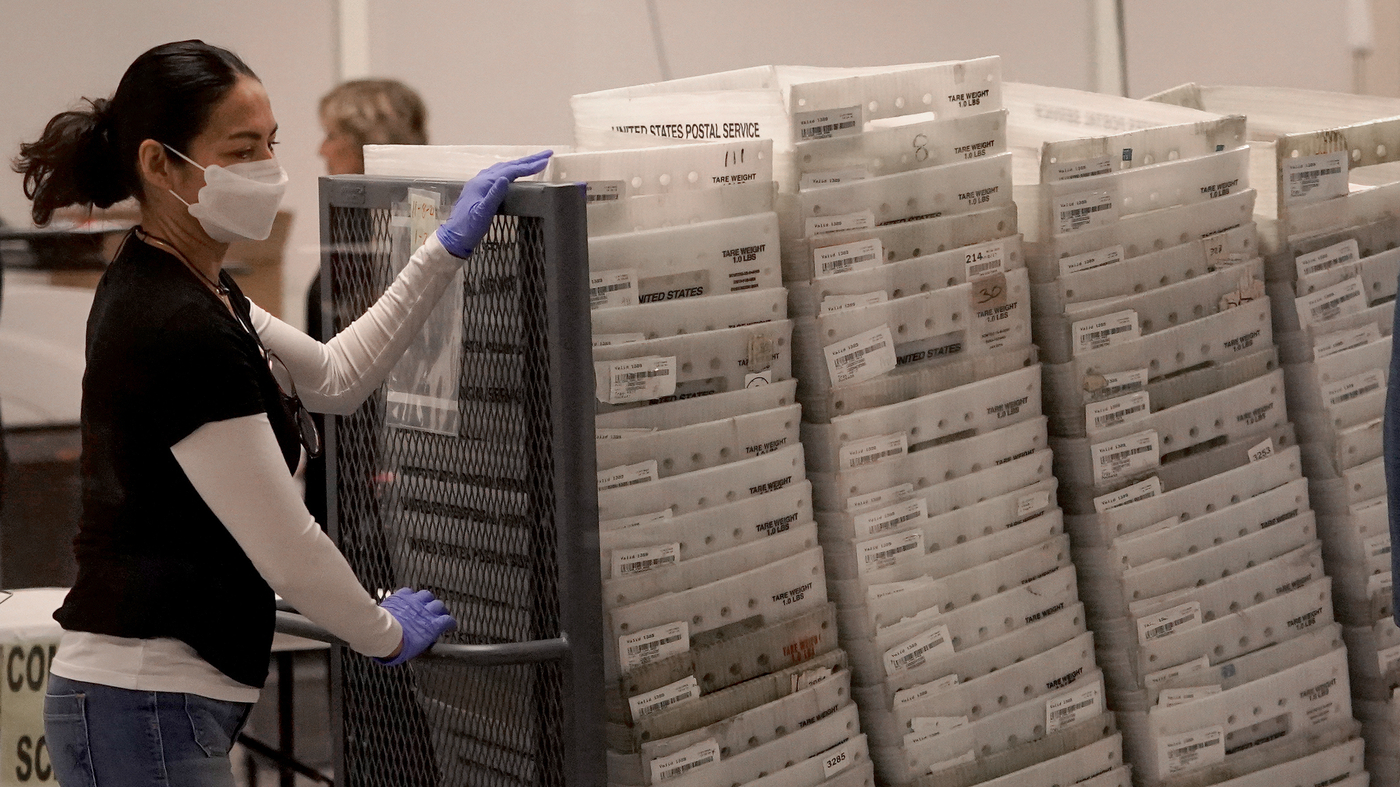Arizona’s Voting Laws Aren’t Closer than They Look: Tammy Patrick’s Ten-Year Experience in Maricopa
Arizona’s voting laws coupled with shifting voter behavior are to blame for the long wait for vote totals, and tight margins mean that outlets like The Associated Press cannot call certain contests.
Tammy Patrick, a senior adviser at the Democracy Fund, spent a decade working as a Maricopa County election official, mostly as a federal compliance officer. More than half of the voters in the state of Arizona live in Maricopa.
Patrick says the nuts and bolts of how elections are run in Arizona haven’t changed a lot since her time there. But she says voter behavior and political realities have.
Patrick says that this distrust could be the reason why more people dropped their ballots at a polling site on Election Day.
She says that it’s typical for about 180,000 ballots to be turned in on Election Day. “When I was there for that decade that was kind of the standard number.”
Whatever the reason, now election officials must process and tabulate all of those ballots. That means signature verification and ballots being checked by bipartisan teams.
Patrick says that an “Extraction” machine could speed up the process. Many counties in Florida have in-house devices that cut the top of an envelope and open it with air, which makes it easier to remove the ballot.
Broadly speaking Arizona and Florida have similar deadlines and processing rules for mail ballots, though some smaller regulations and procedures — like the inhouse extraction Patrick described — offer some key differences. As a point of comparison, Florida has become a popular spot for those on the political right that criticizes Arizona’s elections management.
Among those taking aim at Arizona’s elections management are Kari Lake, the GOP nominee for governor, and Mark Finchem, the Republican nominee for secretary of state. Both Lake and Finchem have echoed the lie that the 2020 election was stolen.
Patrick says that even though the media calls races on election night, there is still a lot of work to be done, which includes processing overseas votes.
Ultimately, she says, Arizona is under this kind of scrutiny mostly because of the political importance of the outcomes of key races there, as well as how close vote margins have gotten in Arizona. She says because the media feels less comfortable calling the race right now, the perception is that this is taking much longer.
But even after all states finish counting and reviewing the votes, the 2022 midterm general elections are not officially over until the results are certified.
The 2020 election is when attention will be on the ceremonial step of turning unofficial results into official ones.
A video released by the Michigan Department of State explains that the law requires county boards of election canvassers to review and certify vote totals and that any attempts to refuse to do so for partisan reasons could lead to false and misleading claims.
In states that have deadlines for certifying results, courts could step in to force officials to declare results official, like the New Mexico Supreme Court did for Olloway County’s primary results.
There is a desire by election officials to avoid any potential misinformation that could come about because of illegitimate refusals to certify election results.
“It is kind of a bureaucratic function and not that exciting. There’s not much going on. “It is a group of people sitting around a table looking at paperwork that has been presented to them and the people involved with certification are looking to see if election officials have crossed their T’s and dotted their cards.” I’s and can show that their election was run according to state law.”
Local deadlines to certify results can range from within a week of Election Day to 30 days after the last day of voting, and the timing can shift if there are any recounts.
Still, Underhill says that incidents like what happened in Otero County are “so rare” that if any other officials refuse to certify results, elections could be running into largely uncharted territory.
A video says they are designed to deceive voters and make them doubt the outcome of a legitimate election. “The thing to remember is that these are distractions.”
